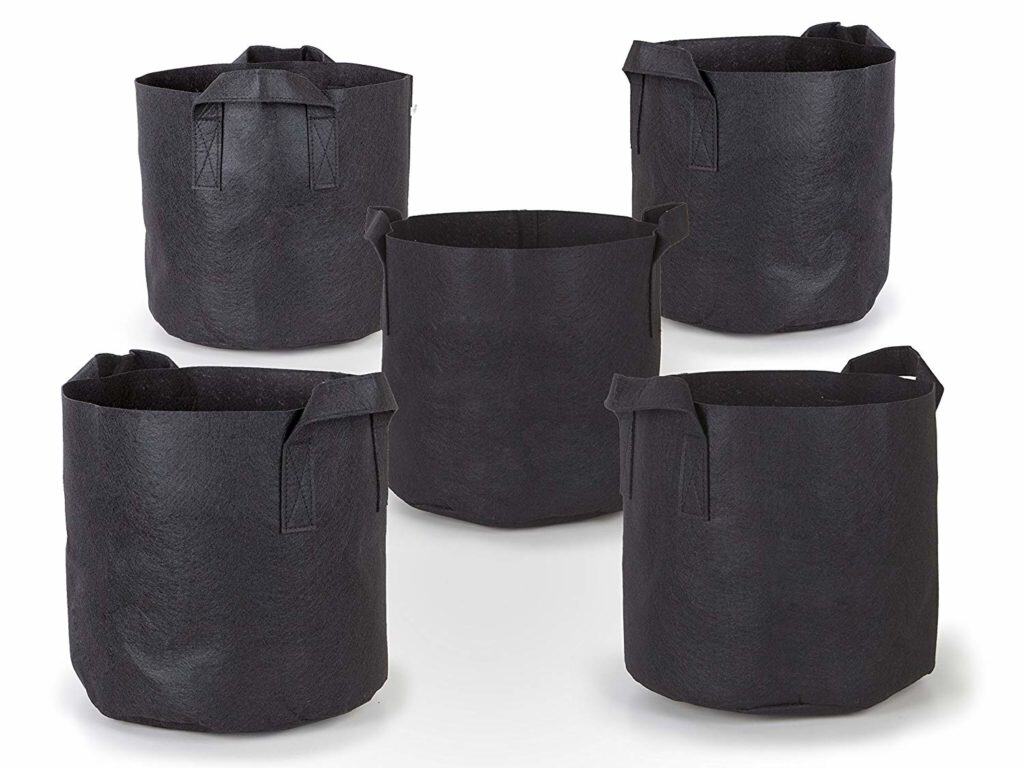Hanging grow bags are an excellent way to grow vegetables, herbs and flowers in small spaces. These fabric pots allow gardeners to maximize vertical space by hanging them from fences, railings posts, and more. When using hanging grow bags for vegetables, you’ll be rewarded with fresh produce that is inexpensive and easy to grow.
Benefits of Using Hanging Grow Bags for Veggies
There are many advantages to using hanging grow bags rather than traditional in-ground gardening or containers sitting on the ground
-
Save space – Hanging pots make use of vertical area, great for small yards.
-
Good drainage and aeration – Fabric pots provide excellent drainage and air circulation around roots. This prevents overwatering.
-
Avoid soil-borne diseases – Gets plants up off the ground away from soil fungi and bacteria.
-
Flexible and lightweight – Bags are easy to install, remove, and store. Much lighter than ceramic or plastic pots.
-
Promotes healthy root growth – Fabric bags gently air prune roots, preventing circling and encouraging branching.
-
Reduce weed growth – Suspended pots keep vegetable plants away from weeds and grass. Less maintenance.
-
Convenient harvesting – Waist-level hanging bags make picking veggies and herbs easier on the back.
-
Versatile – Grow bags can be hung from various structures to suit your unique space.
-
Low cost – Inexpensive fabric pots are reusable over many seasons. A small initial investment.
Best Vegetables for Hanging Grow Bags
Many popular garden veggies thrive in hanging grow bags. Some top choices include:
-
Leafy Greens – Lettuce, kale, spinach, chard, arugula grow well in shallow bags. Frequent harvesting promotes regrowth.
-
Radishes – Perfect for grow bags. Fast-growing and ready for harvest in just 3-4 weeks. Keep sowing for steady supply.
-
Green Beans – Climbing or pole beans grow vertically. Use taller bags or provide plant support structure.
-
Cherry Tomatoes – Compact cherry tomato plants don’t require large bags. Delicious sun-ripened flavor.
-
Peas – Grow dwarf or bush peas in hanging bags. Add mesh, trellis, or cage for vines to climb.
-
Peppers – Bell and chili peppers produce abundantly in grow bags. Use larger bags for bigger varieties.
-
Eggplant – Love vertical space and warmer weather. Grow delicious smaller Asian types in bags.
-
Herbs – Prolific basil, parsley, cilantro love hanging bags. Better flavor when grown off the ground.
-
Beets & Carrots – Shallow-rooted varieties do well in grow bags. Use taller bags for longer roots.
-
Summer Squash – Grow compact zucchini or bush scallop squash in vertical bags.
How to Use Hanging Grow Bags for Vegetables
Follow these simple steps for a successful hanging vegetable garden using grow bags:
-
Select high-quality bags – Look for durable fabric with double stitching. Dark colors absorb more heat. 5-15 gallon sizes work well.
-
Add drainage holes – If bags lack holes, cut or punch a few near the bottom to prevent soggy soil.
-
Use lightweight potting mix – Regular garden soil is too heavy. Opt for mixes with peat moss, perlite or vermiculite.
-
Fertilize regularly – Due to smaller volume of soil, plants need consistent feeding. Use slow release or liquid fertilizer.
-
Water adequately – Check bags daily and water when top few inches of soil become dry. Soak thoroughly.
-
Allow 6-12″ between bags – Space hanging bags well to allow air circulation and prevent pests/disease spread.
-
Hang in optimal light – Most vegetables need at least 6 hours of direct sun daily. Move bags to follow the sun.
-
Monitor for pests – Inspect plants frequently. Take action early against aphids, mites, caterpillars, etc.
-
Harvest frequently – Pick ripe veggies like beans, tomatoes, greens often to encourage more production.
By following these tips and selecting suitable vegetable varieties, you can enjoy a bountiful harvest from your hanging grow bag garden all season long. The vertical growing space helps maximize yields in small areas for garden-fresh produce. Get your hanging pots ready for spring planting!
Vertical Hanging Growing Bag
FAQ
What vegetables can be grown in hanging bags?
Are grow bags good for growing vegetables?
What are the disadvantages of grow bags?
- A Complete Guide to Caring for Yuki Cherry Blossom Shrub - January 23, 2025
- Identifying Red Hot Poker Seeds: What to Look For When Harvesting Torch Lily Pods - January 23, 2025
- A Complete Guide to Harvesting Evening Primrose Seeds - January 23, 2025

